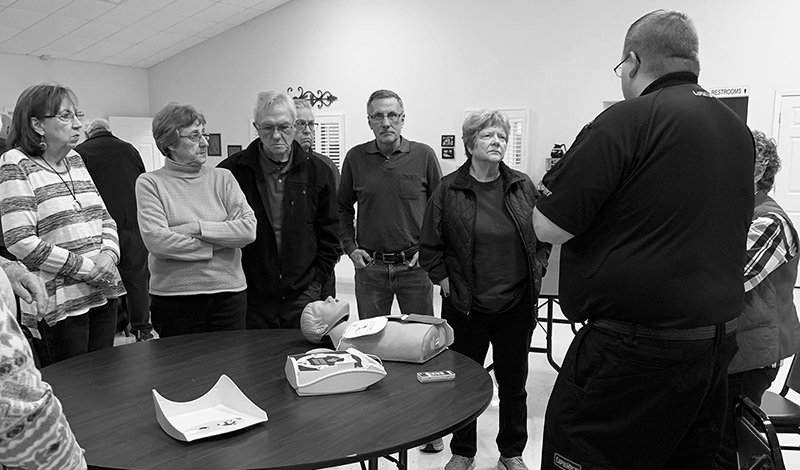Every second counts when someone has a heart attack, and a bystander with even a basic knowledge of cardiopulmonary resuscitation can literally be the difference between life or death.
To that end, LifeNet has been offering bystander CPR classes "as often as we get requests for them," Tina Bell, LifeNet's director of public relations and marketing, told The Sentinel-Record. It also includes the training as a community education initiative at most events they participate in throughout LifeNet's Hot Springs division.
"The instructional part of the class only lasts 15 to 30 minutes," she said. "We spend about 15 minutes discussing the reasons behind doing compression only CPR and how to do it. Then we spend an additional 15 minutes discussing how to use an AED (automated external defibrillator) if the facility where the class is held has an AED or requests AED training. The length of time for the hands-on portion of the class can vary depending on the number of participants."
Bell said they require a minimum of 10 people to conduct a class and like to keep classes to around 25 or 30 people "to ensure adequate time for hands-on practice," but can conduct multiple classes if a church, business or organization has a larger number of interested people. They will also work with smaller groups to find other groups they can join with to create a class of more than 10.
LifeNet has offered such classes since the American Heart Association started recommending bystander CPR for the lay rescuer, but "it's a program I don't believe the community knows we offer," she said.
In 2018, LifeNet attempted resuscitation on 169 sudden cardiac arrest patients (not including trauma or pediatric patients) within the Hot Springs Division, of which 15 percent survived to hospital discharge, Bell said, noting the national average is 10 percent.
"While our survival rate is above the national average, we also know of studies in communities where widespread bystander CPR training has been provided, survival rates have been reported to be as high as 49 to 74 percent," she said. "We would like to see our survival rates in Hot Springs that high, but we need a community of people who have been trained."
AHA studies have shown a common reason for bystanders to be reluctant to perform CPR is "fear of failure," Bell said, noting, "We want to take the fear out and arm people with the knowledge they need to help save lives in our community."
Many people are also reluctant because "they don't want to give mouth-to-mouth" but the bystander CPR class LifeNet teaches does not include rescue breathing since the AHA now teaches that untrained rescuers should provide compression-only CPR for adult victims of cardiac arrest.
"The rescuer should continue compression-only CPR until the arrival of an AED or rescuers with additional training. All lay rescuers should, at a minimum, provide chest compressions for victims of cardiac arrest," Bell said.
One of the most important factors in helping someone survive an SCA is quick access to an AED and CPR being started immediately with quality chest compressions, she said. "Most SCAs occur in the home, and depending on where you live, it can take LifeNet at least eight minutes to get to you -- longer if you live in a more rural area."
Bell said the chance of successfully resuscitating a patient who has not received chest compressions during those first eight minutes is "very low," which is why CPR classes are so important.
Bell stressed that people who attend one of LifeNet's bystander CPR classes will not be CPR certified, but will understand how to give quality chest compressions.
"LifeNet still encourages you to become CPR certified to learn the full skills of CPR, including rescue breaths and high-quality chest compressions. Knowing these skills is important because rescue breaths are still recommended for infants, children, victims of drowning or drug overdose, or people who collapse due to breathing problems," she said.
Local on 03/19/2019